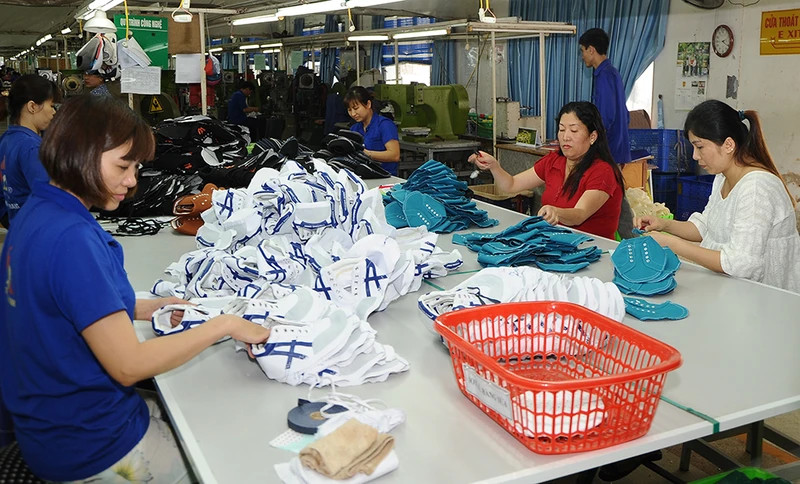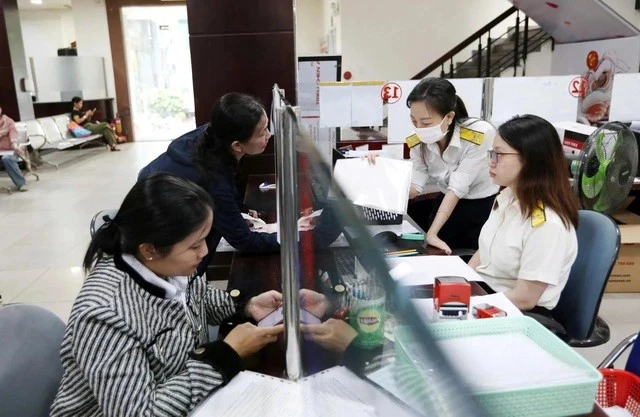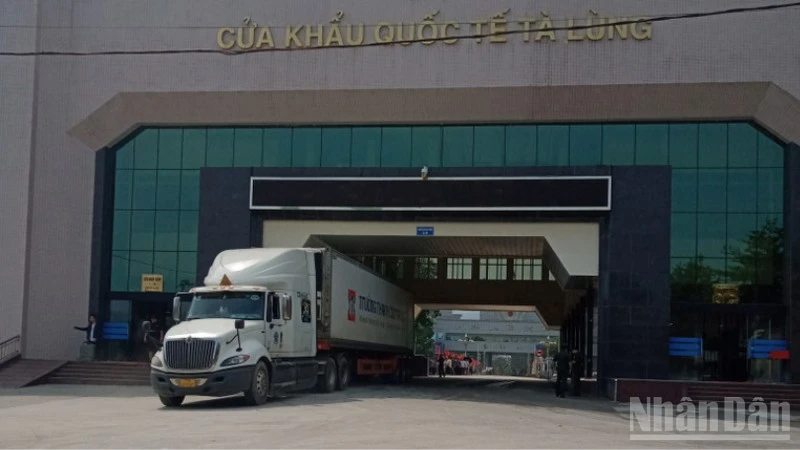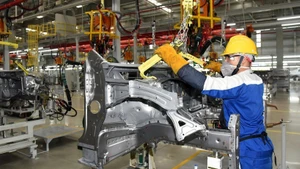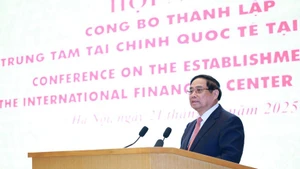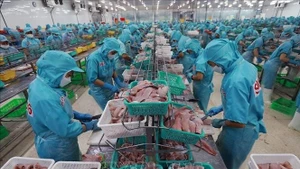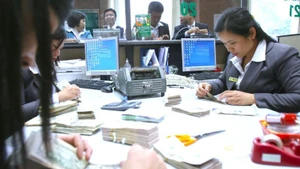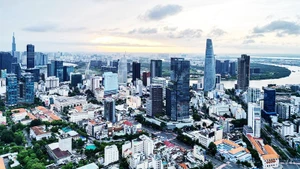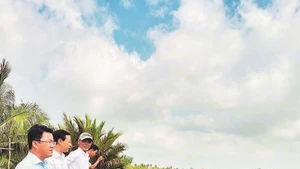The textile and footwear industries are two of Vietnam's key export sectors, with export turnover consistently growing at an average annual rate of over 10%. According to World Trade Organisation (WTO) and World Footwear magazine reports, Vietnam is the second-largest footwear exporter and the third-largest exporter of textiles and garments globally.
Dependency on raw materials and accessories
In the first six months of the year, although there has been a significant rebound with export growth exceeding 10%, the textile and footwear industries face numerous challenges due to increasingly stringent requirements from import markets. Nguyen Duc Thuan, Chairman of the Vietnam Leather, Footwear and Handbag Association (Lefaso), stated that the issue of product traceability to prove the manufacturer's responsibility for ensuring sustainable development is becoming a mandatory trend that is being legalised in import markets. However, both industries remain overly focused on outsourcing and rely heavily on foreign supply chains for materials. Businesses will encounter significant difficulties if export partners refuse to accept outsourced goods because the materials do not come from designated suppliers.
According to data from the General Department of Customs, in the first six months of the year, the import of raw materials for the textile and footwear industries reached approximately 13.42 billion USD, an increase of 14.11% compared to the same period in 2023. This includes 7.24 billion USD for fabrics, 1.28 billion USD for various types of yarn, 1.49 billion USD for different types of cotton, and 3.41 billion USD for textile and footwear accessories. Deputy Director of the Department of Industry Pham Tuan Anh under the Ministry of Industry and Trade pointed out that the heavy reliance on imported raw materials could significantly impact the overall development of the industry in the future, especially as many countries (including the US and EU) move towards Net Zero goals and impose stricter regulations on supply chain control, requiring products to meet high domestic content ratios.
In this context, for textile and footwear products to take advantage of the reduced import duties in markets where Vietnam has signed free trade agreements (such as the Vietnam-European Union Free Trade Agreement), the rules of origin stipulated in these agreements have come into effect. This development significantly impacts both domestic enterprises and foreign direct investment (FDI) companies focused on export production. Therefore, as Tuan Anh emphasised, developing a reliable source of raw materials for the textile and footwear industries is essential.
Developing a centre for raw and auxiliary materials
In December 2023, the Vietnam Leather and Footwear Association and the Vietnam Textile and Apparel Association sent a document to the Ministry of Industry and Trade seeking opinions on the policy to establish a Centre for Trading and Development of Raw and Auxiliary Materials for Vietnam's Fashion Industry. The establishment of this centre aligns with the direction for developing the supply of raw and auxiliary materials in the textile, garment, leather, and footwear industries, as outlined in Decision No.1643, dated December 29, 2022, by the Prime Minister approving the Strategy for the Development of the Textile and Garment and Leather and Footwear Industries in Vietnam by 2030, with a vision to 2035, as well as Resolution No.115, dated August 6, 2020, from the Government regarding solutions to promote the development of the supporting industry.
Thuan expressed his hope that the establishment of the centre will gather suppliers of raw and auxiliary materials for textile, garment, leather, and footwear production, helping factories avoid the hassle of searching for them and shorten the time for producing samples as factories have access to readily available supply sources; and make pricing more competitive, thereby encouraging new and young enterprises to participate in the industry, supporting fashion design, ecological design, brand building, and promotion. This will lead to the formation of a standardised and transparent market for raw and auxiliary materials in the fashion industry, as well as the establishment of transactions and activities related to research and development, technology transfer, and innovation in production technology, enabling businesses to quickly access new and clean technologies. “Developing the domestic trading centre is an indirect method to promote the production of domestic raw and auxiliary materials to increase the localisation rate for Vietnamese fashion products”, Thuan said.
According to Vice President of the Vietnam Textile and Apparel Association Truong Van Cam, establishing the centre is necessary to support businesses in actively transitioning to a higher export-oriented model instead of primarily relying on contract manufacturing. It aims to promote the development of the supporting industry for domestic textiles and garments, making it easier to trace the origins of materials and serve the domestic fashion industry before reaching global markets. However, this proposal is not a new issue, and its implementation has not yet been successful. For instance, some businesses have invested in and built raw and auxiliary materials but have not achieved significant results, with some having to close down after a period of operation. “From the experiences of countries like the Republic of Korea and China, authorities should assist businesses with policies, resources, and land to help stabilise investments, transfer technology, and enhance transactions between domestic and foreign enterprises”, Truong Van Cam recommended.
According to the Ministry of Industry and Trade, Vietnam's textile, leather and footwear industries hold a significant position on the global map, making important contributions to economic development and ensuring livelihoods for many people. However, to enhance competitiveness, especially towards green consumption and higher standards, Vietnam must master raw and auxiliary materials and the various stages of the product design process. Therefore, achieving self-sufficiency from raw material sources to auxiliary materials is a crucial issue.
The Department of Industry, under the Ministry of Industry and Trade, has been working with the two associations to finalise the details of the project to establish the Centre, including agreeing on its name, location, scale, format, funding sources, and impact assessment. It is expected that in October, the associations will conduct a survey mission to learn from the experiences of China and other countries that have successfully established similar models to refine the project and ensure it aligns with practical needs and operates effectively in the future.
